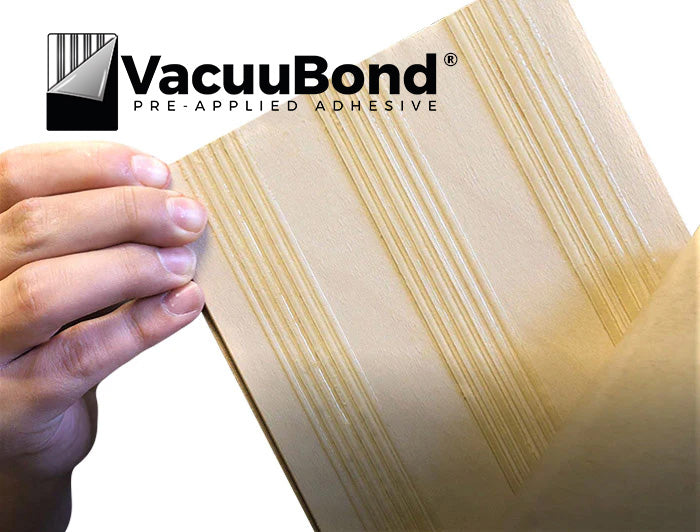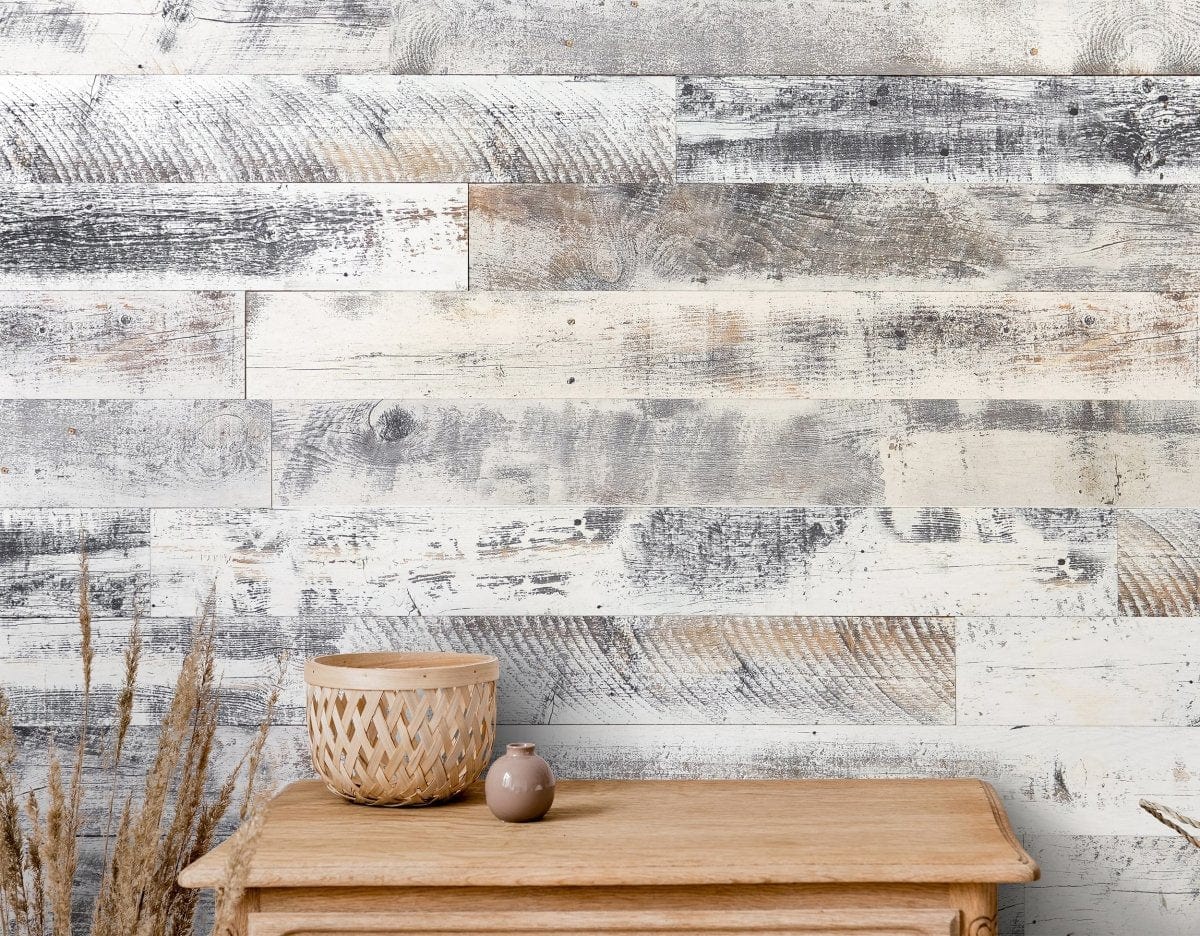Your Cart is Empty
Get your first 3 samples FREE! Use code: 3FREESAMPLES at checkout!
Get your first 3 samples FREE! Use code: 3FREESAMPLES at checkout!
Shop Products
What's Trending
Resources
Wallplanks® Blogs
The Best Top Coat Wood Finish
Pre-Applied Adhesive
Wallplanks® Blogs

View Blogs >
The Best Top Coat Wood Finish

Read More >
Pre-Applied Adhesive

Read More >
How to Use Wood Wall Paneling to Elevate Your Home Design
August 22, 2025 8 min read

Wood has always been synonymous with warmth, craftsmanship, and timeless appeal. Today’s wood wall paneling brings those qualities into modern interiors with fresh profiles, precision engineering, and installation systems that make a big impact without major renovation. Whether you’re designing a contemporary loft, refreshing a traditional colonial, or creating a serene home office, the right paneling strategy can add depth, texture, and long-lasting value.
Why Wood Wall Paneling Is Back—and Better Than Ever
Two shifts are driving paneling’s resurgence. First, homeowners and designers want visual interest that paint alone can’t provide. Second, manufacturers have refined materials and formats, delivering prefinished planks and panels that install cleanly, wear beautifully, and minimize disruption. The result is a category that blends classic materiality with present-day performance: stable surfaces, durable finishes, and profiles that suit both minimal and maximal aesthetics.
In short, paneling isn’t just decorative—it’s strategic. It defines zones in open plans, improves acoustics, conceals minor wall imperfections, and provides a brand-worthy backdrop for video calls and in-person entertaining alike.
Start with a Design Intent, Not a Product
Paneling looks best when it answers a clear design question. Begin by articulating the outcome you want:
-
Add depth: You want sculptural shadows and tactile richness.
-
Brighten: You need light-reflective finishes that lift a dim room.
-
Warm up: You’re softening a space dominated by hard surfaces (glass, metal, stone).
-
Unify: You want a consistent visual thread across an open plan.
-
Quiet down: You’re aiming for better acoustics in media rooms or offices.
Once your intent is defined, you can select the right profile, scale, and finish to achieve it.
Choosing the Right Paneling Profile
The profile you choose shapes the room’s personality. Here are the most versatile options and when to use them:
Vertical Planks or Slats
Running planks vertically elongates walls and emphasizes ceiling height. This is a smart choice for rooms that feel squat or for narrow spaces like entry corridors. Vertical slat panels, in particular, create crisp light-and-shadow patterns and deliver a refined, architectural look.
Horizontal Planks (Shiplap or Nickel-Gap)
Horizontal lines visually widen a room and evoke calm, coastal, or Scandinavian vibes, depending on color and spacing. Use in living rooms or bedrooms where you want an easygoing, tailored backdrop that plays well with art and textiles.
Chevron and Herringbone
Dynamic and graphic, these patterns become instant focal points. Reserve them for accent walls or niches so they can shine without overwhelming. They pair especially well with simple furnishings and neutral palettes.
Board-and-Batten or Beadboard
These profiles bring classic craftsmanship to dining rooms, mudrooms, and stair halls. In transitional interiors, painting board-and-batten to match the wall color yields subtle texture; in traditional spaces, a contrasting tone highlights the millwork.
Full-Height vs. Wainscot
A wainscot (typically 36–60 inches high) adds protection and architectural detail while leaving room for color above. Full-height paneling wraps the room in texture and is most effective where you want immersive warmth—think bedrooms, libraries, and cozy lounges.
Selecting Species, Tones, and Finishes
Color and finish set the mood and determine maintenance:
-
Light oaks and maples feel bright and airy. They’re ideal for small rooms or homes that lean modern, Scandinavian, or coastal.
-
Mid-tone walnuts and cherry-inspired hues add richness without feeling heavy. These bridge modern and traditional furnishings with ease.
-
Deep espresso or charcoal finishes are dramatic and refined—best used in larger rooms or as selective accents so they don’t visually compress the space.
-
Matte and low-sheen finishes hide fingerprints and diffuse light;satin finishes are slightly more reflective and easier to wipe clean in high-touch areas.
If your furnishings already have multiple wood species, choose a paneling tone that complements rather than matches them. Variation reads intentional; near-matches can feel off by comparison.
Where Paneling Makes the Biggest Impact (Room by Room)
Entry and Hallways
First impressions matter. A paneled entry wall, flanked by a console and mirror, signals quality from the moment you walk in. In long hallways, periodic paneled sections or a waist-high wainscot add rhythm and prevent the “tunnel” effect.
Living Rooms
Use paneling to anchor the main seating area or to frame a fireplace wall. Vertical slats draw the eye up and balance low sofas; horizontal profiles create a serene gallery backdrop for art and shelves.
Kitchens and Breakfast Nooks
Paneling can warm the transition between cabinetry and dining spaces. Consider a paneled banquette wall or a board-and-batten breakfast nook. For splash zones, confirm your panel finish is moisture-resistant and keep paneling beyond direct water contact.
Bedrooms
A paneled headboard wall adds instant sophistication. For small bedrooms, go vertical and light-toned to create a lift. In primary suites, combine full-height paneling with integrated lighting for a boutique-hotel feel.
Home Offices
Video-call backdrops matter. A clean slat wall or evenly spaced nickel-gap profile conveys order and professionalism on screen while improving acoustics for clearer audio.
Media Rooms
Here, paneling does double duty: it elevates the look and dampens sound reflections. Consider thicker slat profiles with acoustic backing to reduce echo.
Bathrooms and Powder Rooms
Moisture-smart finishes are key. In powder rooms, paneling adds depth under wall sconces and mirrors. In full bathrooms, use moisture-resistant products and keep paneling outside direct shower areas.
Stairwells and Landings
Stairs are sightlines in motion. A paneled stair wall makes everyday travel feel special and protects high-contact surfaces from scuffs.
Installation Approaches That Respect Your Timeline and Walls
You don’t need a full remodel to enjoy paneling’s benefits. Modern systems and best practices simplify installation:
-
Measure twice, order once: Calculate square footage, add 10–15% for cuts and future repairs, and confirm all profile-specific trim pieces (end caps, inside/outside corners).
-
Substrate prep: Paneling hides minor imperfections, but a reasonably flat, clean, and dry wall ensures tight seams and adhesion.
-
Adhesive-backed planks: Many planks offer integrated adhesive for quick, clean installation—a strong choice for accent walls without heavy tools. Follow manufacturer guidelines for surface prep, temperature, and cure times.
-
Nail or staple assist: In high-traffic or ceiling applications, a discreet mechanical fastener supplements adhesive and increases long-term stability.
-
Layout dry-run: Lay out your pattern on the floor or mark the wall to confirm starting points, end cuts, and how seams meet corners or casings.
-
Trim and transitions: Use coordinated trim to finish edges and integrate paneling with baseboards and casings for a polished, built-in look.
Design Techniques to Maximize Impact
1) Frame Functional Zones
In open-concept homes, panel a single wall behind the sofa to define the living area, or the dining zone to create a sense of place. Paneling acts like a “visual rug” for the wall.
2) Play with Proportion
If your ceilings are eight feet, run vertical panels floor to ceiling to emphasize height. In rooms with tall ceilings, a two-thirds-height panel capped with a rail creates a comforting human scale.
3) Layer with Lighting
Wall washers and adjustable spotlights accentuate the paneling’s relief. Sconce backplates on paneled wainscots look custom and add a boutique feel.
4) Mix Painted and Natural Wood
Painted board-and-batten on the lower third, natural planks above: this hybrid approach offers durability where you need it and warmth where you want it.
5) Use Niches and Built-Ins
Panel the back of shelving niches or built-ins to provide contrast. This subtle technique makes collections and books pop without clutter.
6) Continue onto the Ceiling
A paneled ceiling (sometimes called the “fifth wall”) creates a cocooning effect and visually connects open spaces. If you panel both wall and ceiling, vary direction—vertical on walls, planks across the ceiling—for balanced geometry.
Performance, Acoustics, and Maintenance
Beyond aesthetics, paneling contributes to how rooms feel and function day to day.
-
Durability: Prefinished surfaces resist scratches and stains better than site-finished paint. In family spaces and halls, this translates to fewer touchups and a consistently polished look.
-
Acoustics: Wood absorbs and scatters sound more effectively than drywall alone. Slat profiles with felt or acoustic backers can soften reverberation, helpful in media rooms and offices.
-
Cleaning: Most prefinished panels clean with a soft cloth and mild cleaner. Avoid harsh chemicals and saturating water.
-
Seasonal movement: Quality engineered panels are designed to handle humidity shifts with minimal expansion and contraction. Maintain normal indoor humidity for best results.
Sustainability Considerations
Homeowners increasingly factor sustainability into material choices. Sourcing, manufacturing location, and product longevity all matter. Products manufactured in the U.S. withNorth American–sourced materials shorten supply chains and support responsible forestry and domestic jobs. Durable finishes and engineered constructions that extend service life reduce replacement cycles and waste. Choosing timeless profiles over fleeting trends also ensures your investment remains relevant.
Budgeting and Expected ROI
Paneling is a strategic upgrade with a visible return:
-
Perceived value: Paneling signals custom craftsmanship, which often boosts buyer appeal and appraisal impressions.
-
Scope control: Accent walls offer high impact with limited material and labor. Full-room paneling yields a bespoke look comparable to millwork-intensive renovations at a fraction of the disruption.
-
Scalable phases: Start with a primary wall (entry or living), then expand to stairs, bedrooms, or ceilings as budget allows while keeping a cohesive design language.
Common Mistakes to Avoid
-
Ignoring proportion: Oversized battens or overly narrow slats can throw off balance. Mock up spacing with painter’s tape before committing.
-
Color mismatch: Trying to match paneling to existing wood exactly often highlights tiny differences. Aim for complementary contrasts instead.
-
No edge plan: Unfinished edges at outside corners or where paneling meets drywall read unintentional. Plan for trim, terminations, or reveals.
-
Skipping acclimation: Even engineered wood benefits from short acclimation to the room before installation. Follow manufacturer guidance.
-
Overcomplication: If the room already has beams, patterned tile, and ornate fixtures, pick a quiet panel profile so the space doesn’t compete with itself.
A Step-by-Step Example: Creating a Sophisticated Living Room Accent Wall
-
Define the goal: Add warmth, improve acoustics, and create a refined video-call backdrop.
-
Choose the profile: Vertical slat panels in a mid-tone oak for height and texture.
-
Measure and plan: Confirm overall width, locate studs for optional brad nails, and decide trim details at adjacent casing.
-
Prepare the surface: Fill major divots, remove protrusions, and wipe down dust.
-
Install: Start at the most visible corner, use a level for the first course, and maintain consistent spacing.
-
Integrate lighting: Flank the paneled wall with minimalist sconces and aim a wall-washing track light to reveal shadow lines.
-
Furnish: Float the sofa a few inches off the wall and hang art with generous negative space to let the paneling breathe.
The finished effect: a tailored, acoustically improved room that photographs and performs as well as it feels.
Why Homeowners and Designers Choose Wallplanks
Selecting the right partner is as important as selecting the right profile.Wallplanks is a U.S. company based inWeston, Wisconsin, founded in2017 by industry expertTryggvi Magnusson. From the outset, Tryggvi’s vision was clear: to developdurable, beautiful, and high-performing wall products that are easy to use and capable of transforming any interior. Wallplanks products are manufactured by its parent company,From the Forest, LLC—founded in2007—an industry flagship in manufacturing premium hardwood flooring in the United States. Importantly,all materials are sourced from North America, supporting responsible forestry and resilient domestic supply chains.
That pedigree matters when you’re investing in a material that should look exceptional on day one and continue performing for years. It shows up in precise milling, consistent finishes, smart installation systems, and service that understands both the homeowner’s timeline and the designer’s standards.
Final Thoughts
Wood wall paneling is more than a trend—it’s a design tool that delivers structure, mood, and measurable performance benefits. With thoughtful planning, the right profile, and quality manufacturing, you can achieve an elevated interior that feels custom without the custom complexity.
Shop with Us Today
Ready to transform your space with premium paneling? Explore the Wallplanks collection, request samples, or speak with a product specialist to fine-tune your design. Founded byTryggvi Magnusson and manufactured byFrom the Forest, LLC, we bring North American–sourced materials, U.S. craftsmanship, and installation-friendly solutions together so you can create a home that looks—and performs—beautifully for years to come.

